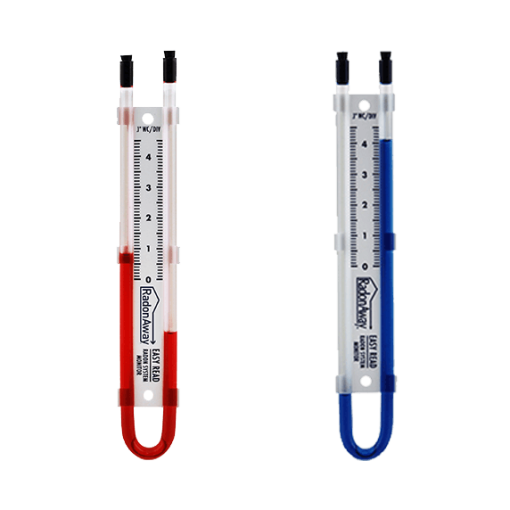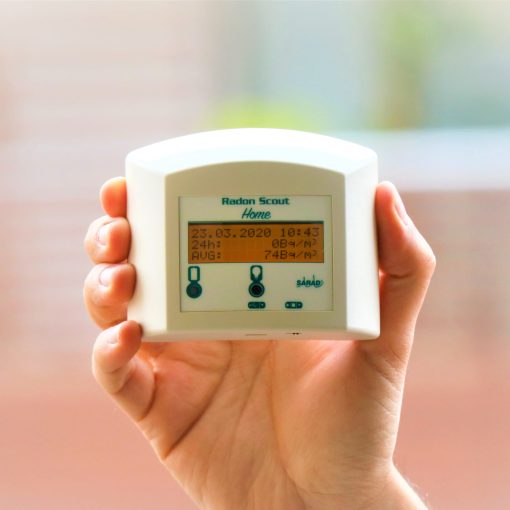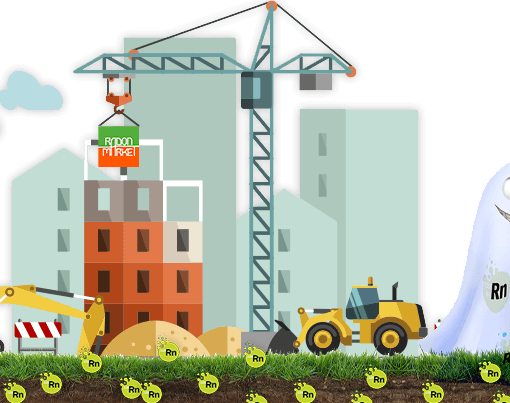
Reza Hosseini, PhD – Managing Director at RadonMarket, R&D Manager & NRPP MFM Certified Radon Professional at Niton srl
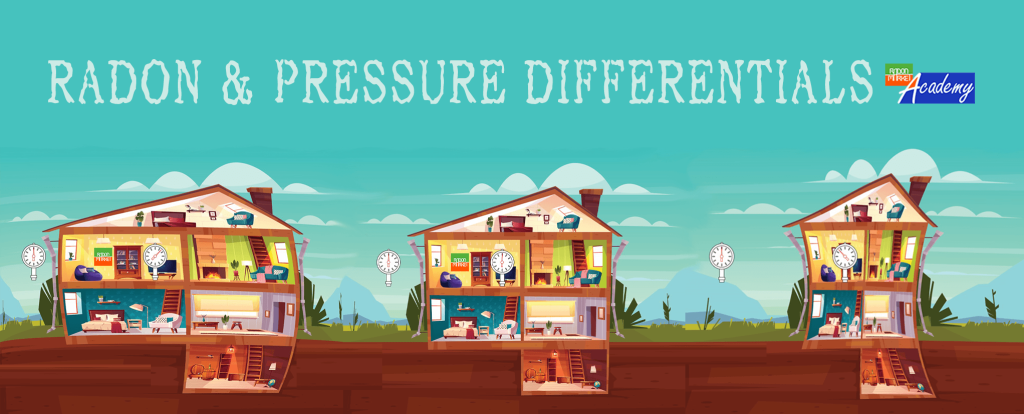 There are three main forces that cause Radon laden soil gas to enter buildings. We learned from the previous articles that these forces are:
There are three main forces that cause Radon laden soil gas to enter buildings. We learned from the previous articles that these forces are:
✅ Stack effect or chimney effects,
✅ Soil pressure, and,
✅ HVAC systems.
Whether it is natural, like the stack effect, or introduced to the building by an unbalanced HVAC system, these forces change the balance and create pressure differentials between the outside air and the inside air. The pressure differentials between outside and inside then define the behavior of soil gas entry into the house. Hence we can say that the mechanism of Radon entry is all about pressure differentials.
In this number of RadonMarket Mag, we examine this topic in more detail and see how the pressure differentials are measured.
We could have three conditions for pressure differentials. The building could be in positive📣, negative, or neutral pressure with respect to the outside. Let’s start with a neutral pressure condition.
✔️ NEUTRAL PRESSURE
When good communication to the outdoor air exists in the basement, like open windows and doors or other big openings, the differential pressure reduces significantly. Therefore, there is not much movement between inside air and the Radon laden soil gas.
Open windows and doors significantly affect the differential pressure and also provide some dilution, which helps reduce the Radon level.
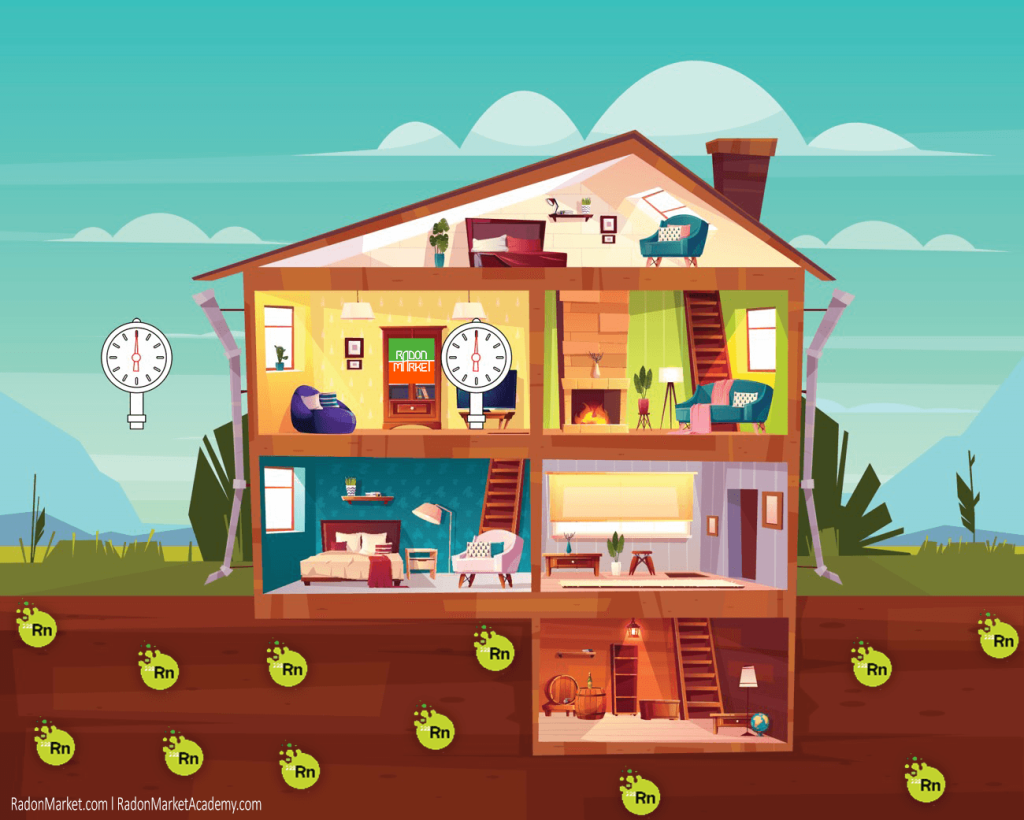
Radon & Neutral Pressure
| 📣 It is interesting to know that a positive pressure equal to a few thousandths of an inch of the water column is enough to draw Radon into the house. |
✔️ NEGATIVE PRESSURE
Most houses have negative pressure📣, which means that the pressure inside the house is lower than the outside air pressure. Negative pressure inside the building creates a vacuum that draws the outside air, including the soil gas, into the house. The negative pressure and the indoor Radon level are directly correlated. Higher negative pressure cause higher indoor Radon level🔔, and by decreasing the negative pressure, the indoor Radon level decrease.
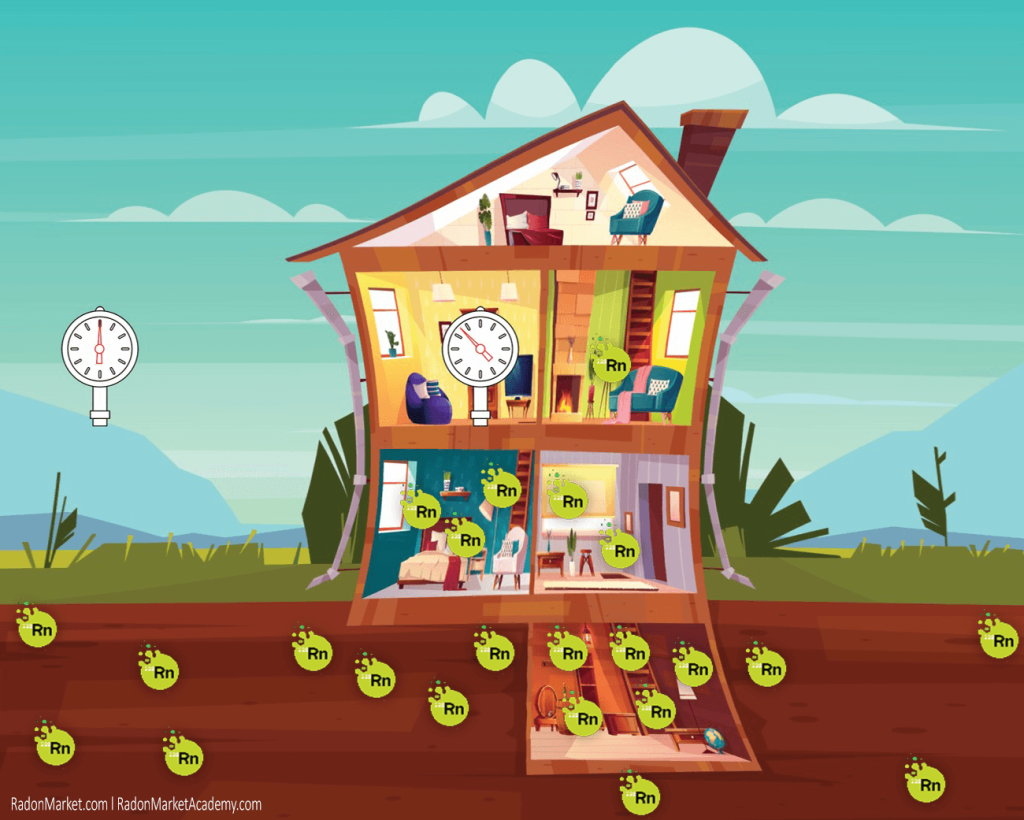
Radon & Negative Pressure
| 📣 Some rare new homes may have systems to pressure the building positively. |
A house in a negative pressure can suck air directly beneath it and generally up to 10 meters around its perimeter. This area could become even larger when the soil gas beneath the house’s perimeter cannot find a connection to the outside. For example, when around the building is covered by asphalt. Radon comes from the foundation, mostly (NOT Always!), there would be a higher Radon level in the basement. However, there is no predictable ratio between the basement and upper floors.
| 🔔 Even with the negative pressure, the source (i.e., Radon in the soil gas) and the pathway are still needed to have Radon in the house!. |
✔️ POSITIVE PRESSURE
When air blows from outside into the house creates positive pressure. The positive pressure pushes the soil gas back and does not let Radon comes inside. In this case, besides retarding the soil gas entry, it also provides some dilution. It is more common to see positive pressure in large buildings or houses equipped with swamp coolers.
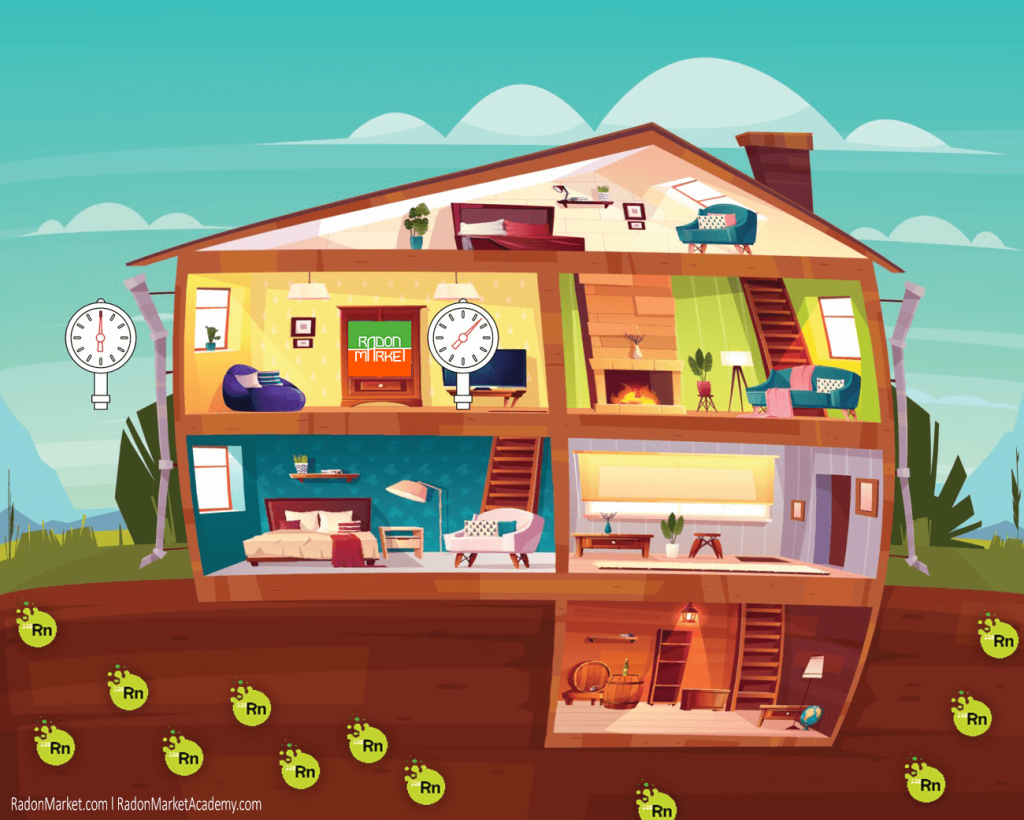
Radon & Positive Pressure
🤷 How to measure pressure differentials?
➡️ Digital micromanometer
They measure the pressure difference between two ports on the instrument.
➡️ Smoke Bottles
The smoke only shows the direction of airflow and does not provide a quantitative result. However, they are easy and very quick to use.
➡️ GM 1-2
The RadonAway GM 1-2 is a one-of-a-kind diagnostic aid designed specifically for the needs of Radon mitigation professionals. It is equipped with both a micro manometer and a grab sampler. The Radon grab sampler feature is the perfect diagnostic tool to assist in finding Radon sources, and the micro manometer measures pressure field extension.
RadonAway GM 1-2 Radon Grab Sampler/Micro Manometer
| 🗨️ In the future, we will talk about the effect of outdoor air, building height, and other parameters on pressure differentials, and we will learn about the concept of NPP (Neutral Pressure Plane). So do not miss the new numbers of RadonMarket Mag. |

